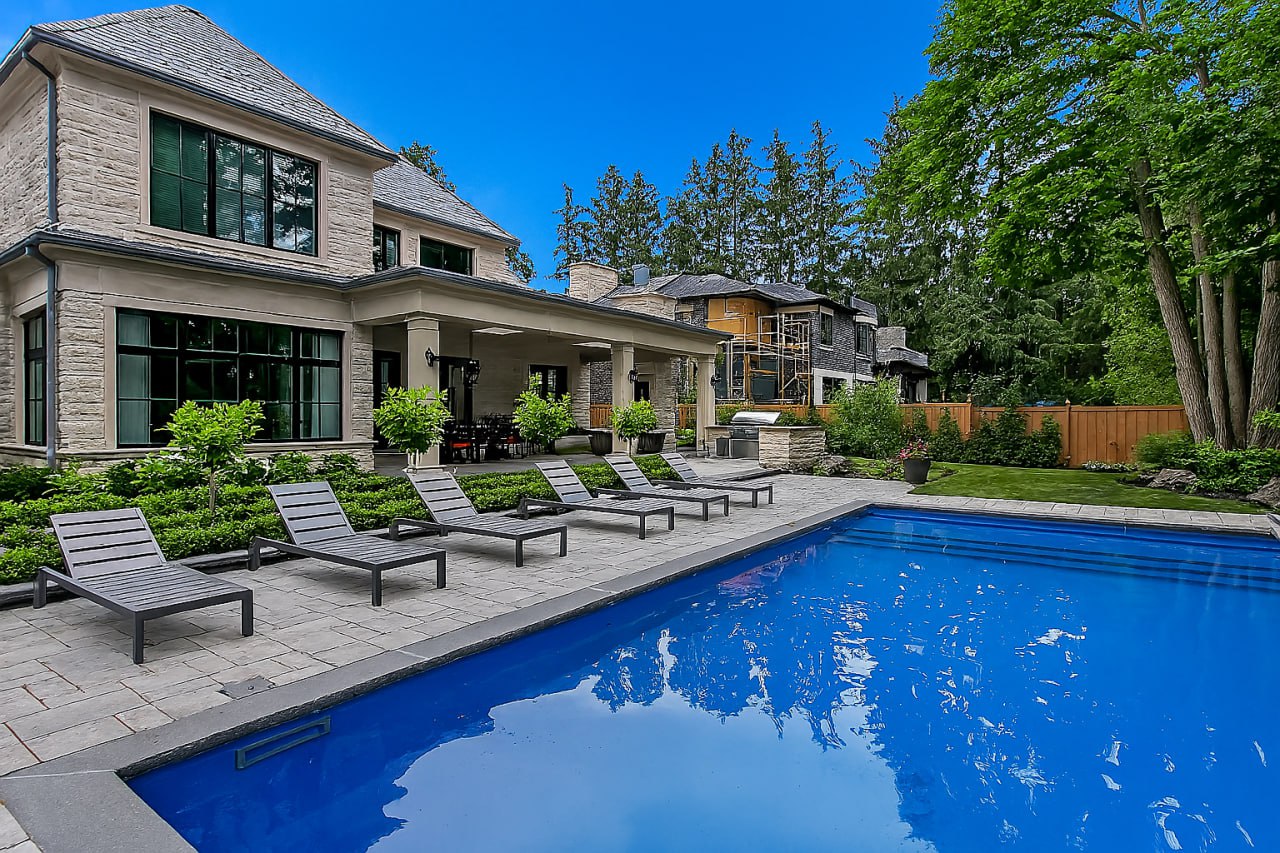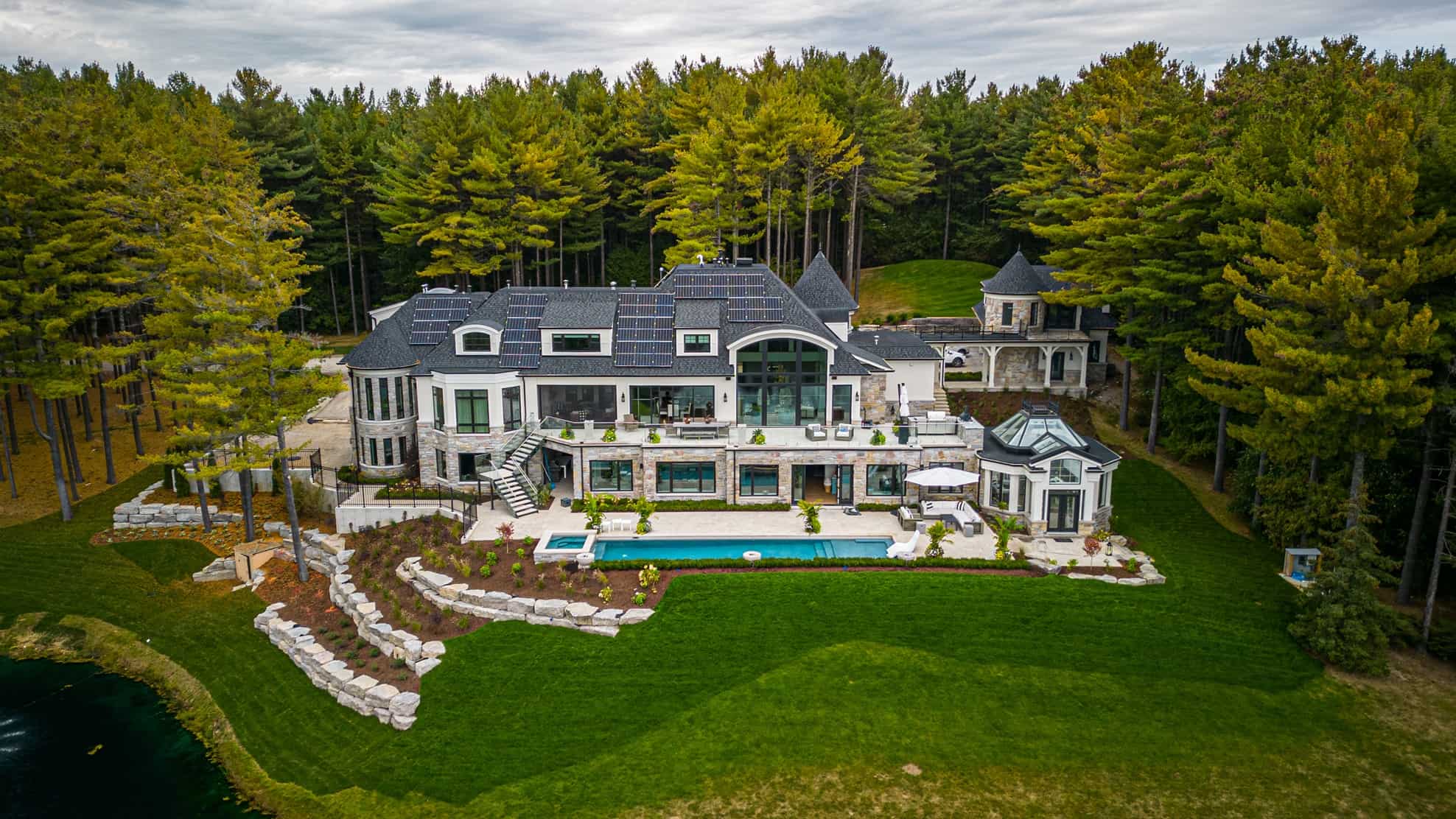Energy efficiency has become a key consideration for home buyers and many who chose to build new luxury custom homes. With household energy consumption becoming a key consideration as we see increases in energy prices and electricity bills and gas bills rise. If you have searched for energy-efficient houses, you have probably seen terms such as net zero ready homes and net zero homes. Many questions arise……
- What do these terms mean?
- Is there a difference between net zero homes and net zero ready homes and moreover how do they compare to a home built to current code requirements?
- does net zero increase indoor air quality results? Is this a good investment for consumers?
- Is the extra cost of net zero justified?
- Does it reduce energy costs enough?
- Will my monthly utility bills be decreased?
In a nutshell why consider building net zero at all?
To understand the difference between a home built to current codes, a full net zero home, and net zero ready homes, let’s evaluate each home type and what makes it unique.
Net zero homes
To begin we must be clear that we are considering the CHBA ( Canadian home builder association) Net Zero labelling program ( although others are similar) and detached homes. This program was born out of the R-2000 standard and incorporates Energy Star.
These homes produce as much green or clean energy as they use. They’re up to 80 per cent more energy-efficient than conventional homes built to code. This is because they are carefully built with extra wall insulation, attic insulation, excellent airtightness and high-performance windows and doors, and efficient heating and cooling systems such as air source heat pumps.
Besides the home’s shell, appliances and lighting must all be energy efficient. Net zero homes use renewable energy systems like solar panels to generate electricity to offset the home’s energy required. A full net zero home equipped with energy storage can be an “off the grid” home, if designed so, and can avert future increases and higher operating costs by lowering annual consumption of energy and supplementing with renewable.
There are efficiency requirements for hot water tanks, a tankless water heater qualifies and is becoming an increasingly popular choice for consumers. Although not mandatory a hot water heat pump tank can be installed. Similarly, with windows, many people assume that triple-pane windows are a must but high-performance energy star double pane windows can be used.
All plumbing fixtures must have water-saving features. There is also a heat recovery device attached to the main drain that recovers heat from wastewater. Efficiency ratings of HRV ( air exchanger) are required to be higher than the standard code. These “fresh air machines” save valuable energy in the winter months and in the summer! This not only saves money on heating but can help provide comfortable and healthy humidity levels.
You can think of it as a “points” system where you can pick and choose which items you decide on as long as the energy modelling is completed, calculating energy demand and ensuring those demands comply with the program there are many options and routes to follow.
Net zero ready homes
These homes are built to the same energy efficiency standards as full net zero buildings. The only difference is that no renewable energy system (like solar panels or a wind generator) is installed. That means everything is designed and constructed to allow easier installation of a renewable energy system some time down the road. Think of these homes as carefully wired for the future – when the homeowner is finally ready to invest in a solar power system, the home is ready. These homes are also referred to as PV-ready homes or net zero energy ready homes.
Should you choose full net zero homes over net zero ready homes?
Solar and other renewable energy sources have an upfront financial investment that some homeowners may not opt for at the outset. In that case, purchasing a net zero ready home means you have an energy-efficient home that can easily upgrade to a net zero property when you are ready financially. Regardless of whether you want to invest in renewable energy sources before or after buying a home, both net zero ready and net zero homes are far more energy-efficient choices than conventional homes and save on monthly utility bills.
Here are other benefits of these both home types.
High home value
Given the high energy efficiency associated with net zero homes and net zero ready homes, your energy bills will fall and stay low throughout the year. This cushions the property owner from the future energy price increase. These homes also have superior building envelope, high-efficiency windows & doors, and improved insulation – thus, they are more durable than most conventional homes. Further according to U.S. studies a home that is “green” can command up to 10% more in selling price than a standard home.
A great living experience
Superior heating and cooling, fresh air ventilation systems, and advanced construction techniques mean consistent temperatures throughout the home, excellent indoor air quality, and less noise, pollen, and bugs from outside. Indeed, the advanced air filtration system means that the home’s interior is free from asthma triggers and other allergens such as pm2.5 and dust.
Environmentally responsible
All energy-efficient features of net zero ready homes and net zero homes work together to minimize the home’s environmental footprint by protecting against climate change and preserving natural resources. Indeed, investing in these homes means embracing a highly energy-efficient future for future generations with substantial energy savings which means a sustainable solution with lower energy usage.

Are all energy-efficient buildings the same?
Suppose you are thinking about constructing a new home or upgrading an existing one. In that case, investing in an energy-efficient home will pay off with extremely low utility bills and increase home value. But not all energy-efficient houses are the same. There are different options, and an experienced renovator or builder can recommend the right options to optimize the energy performance of your property to the most efficient path.
Generally, energy-efficient homes have various labels administered by third parties. These homes must be first inspected and audited to determine their energy efficiency level. Energy labels assure home occupants or owners that the property meets certain energy efficiency levels. Some of Canada’s common energy-efficient labels include the EnerGuide Label (administered by NRCan – Natural Resources Canada) and Net Zero Ready/Net Zero.
The EnerGuide label is simply an official record of a home’s energy performance, estimated in gigajoules (GJ). This label comes with a detailed report to shed light on a home’s energy efficiency compared to a benchmark property. The report also provides information about the home’s energy source, greenhouse gas emissions, and the specific home components that consume the highest amount of energy.
Wrap up
We have hopefully shed some light on net zero building. Investing in either net zero or net zero ready home means you are embracing a highly energy-efficient future. So, if you intend to lower the overall energy consumption of your home and increase its energy efficiency, comfort, and indoor air quality a net zero ready or net zero home is a great option for you.






